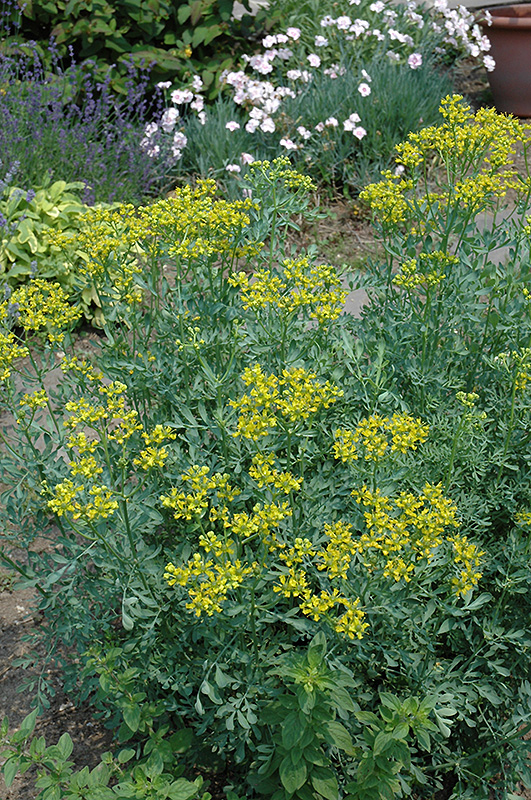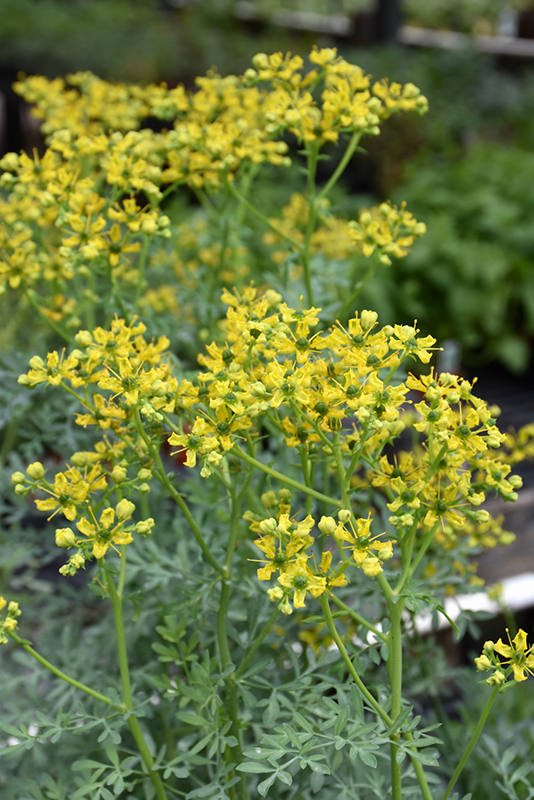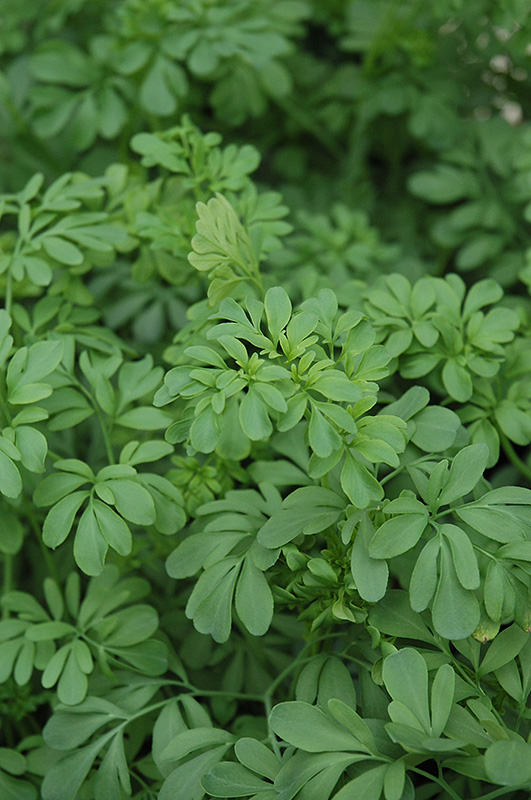Height: 30 inches
Spread: 24 inches
Sunlight:
![]()
Hardiness Zone: 4a
Ornamental Features
Common Rue's attractive fragrant round bipinnately compound leaves remain grayish green in color throughout the year on a plant with a mounded habit of growth. It has masses of beautiful cymes of yellow flowers at the ends of the stems in mid summer, which are most effective when planted in groupings.
Landscape Attributes
Common Rue is an herbaceous evergreen perennial with a mounded form. Its relatively fine texture sets it apart from other garden plants with less refined foliage.
This is a relatively low maintenance plant, and is best cleaned up in early spring before it resumes active growth for the season. Gardeners should be aware of the following characteristic(s) that may warrant special consideration;
- Self-Seeding
Common Rue is recommended for the following landscape applications;
- General Garden Use
- Naturalizing And Woodland Gardens
- Herb Gardens
Planting & Growing
Common Rue will grow to be about 24 inches tall at maturity, with a spread of 24 inches. Its foliage tends to remain dense right to the ground, not requiring facer plants in front. It grows at a fast rate, and under ideal conditions can be expected to live for approximately 5 years. As an evegreen perennial, this plant will typically keep its form and foliage year-round.
This plant should only be grown in full sunlight. It prefers dry to average moisture levels with very well-drained soil, and will often die in standing water. It is considered to be drought-tolerant, and thus makes an ideal choice for a low-water garden or xeriscape application. It is not particular as to soil type or pH. It is highly tolerant of urban pollution and will even thrive in inner city environments. This species is not originally from North America, and parts of it are known to be toxic to humans and animals, so care should be exercised in planting it around children and pets.



